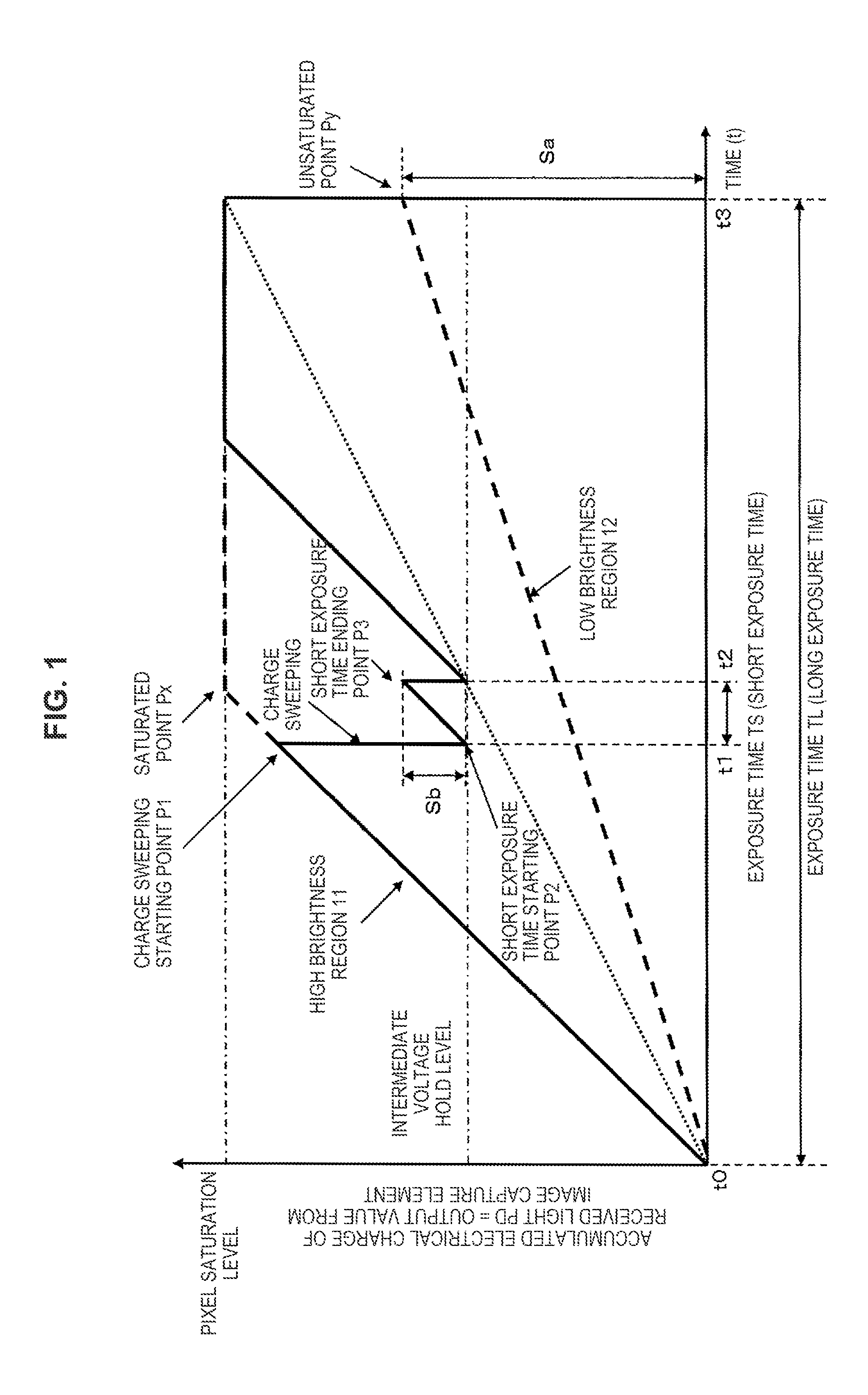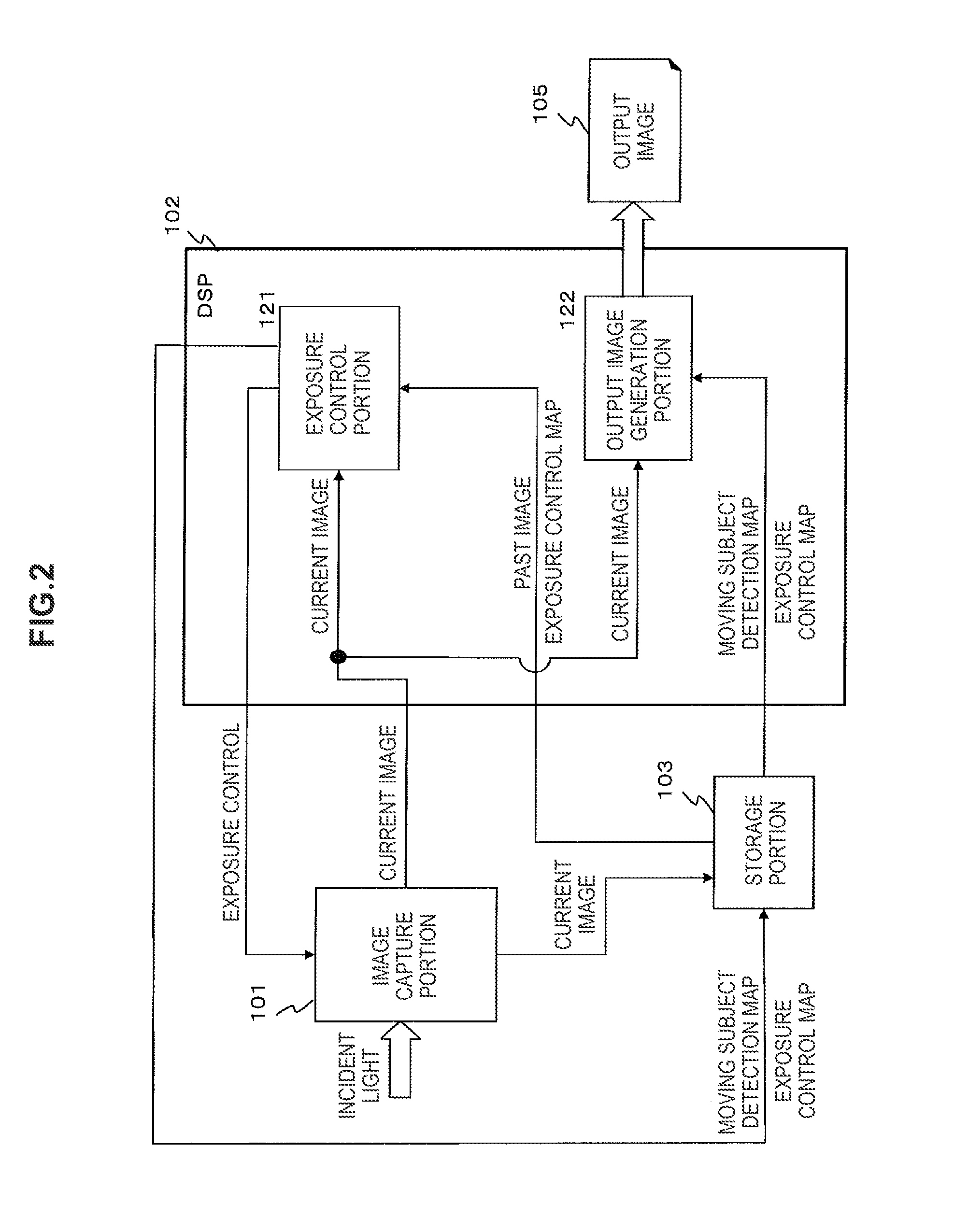Exposure control methods and apparatus for capturing an image with a moving subject region
a control method and image technology, applied in exposure control, image enhancement, instruments, etc., can solve the problems of image quality deterioration, signal-to-noise ratio worsening, and the upper limit of the amount of electrical charge accumulated in the photoelectric conversion element, so as to keep the deterioration of resolution to a minimum, the effect of wide dynamic rang
- Summary
- Abstract
- Description
- Claims
- Application Information
AI Technical Summary
Benefits of technology
Problems solved by technology
Method used
Image
Examples
Embodiment Construction
[0056]Hereinafter, preferred embodiments of the present disclosure will be described in detail with reference to the appended drawings. Note that, in this specification and the appended drawings, structural elements that have substantially the same function and structure are denoted with the same reference numerals, and repeated explanation of these structural elements is omitted.
[0057]Hereinafter, an image capture device, an image capture device control method, and a program according to the present disclosure will be explained with reference to the drawings. The explanation will cover the items below in order.
[0058]1. Configuration and processing of a first example of the image capture device
[0059]2. Configuration and processing of a second example of the image capture device
[0060]3. Configuration and processing of a third example of the image capture device
[0061]4. Configuration and processing of a fourth example of the image capture device
[0062]5. Summary of the configurations o...
PUM
 Login to View More
Login to View More Abstract
Description
Claims
Application Information
 Login to View More
Login to View More - R&D
- Intellectual Property
- Life Sciences
- Materials
- Tech Scout
- Unparalleled Data Quality
- Higher Quality Content
- 60% Fewer Hallucinations
Browse by: Latest US Patents, China's latest patents, Technical Efficacy Thesaurus, Application Domain, Technology Topic, Popular Technical Reports.
© 2025 PatSnap. All rights reserved.Legal|Privacy policy|Modern Slavery Act Transparency Statement|Sitemap|About US| Contact US: help@patsnap.com



